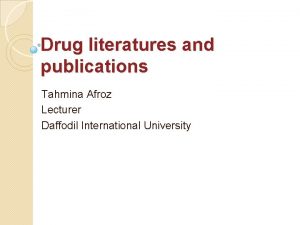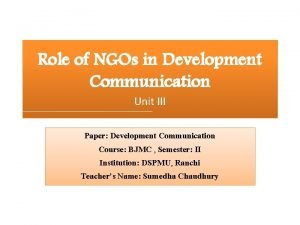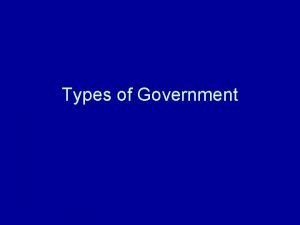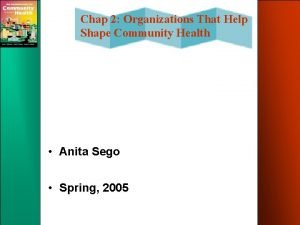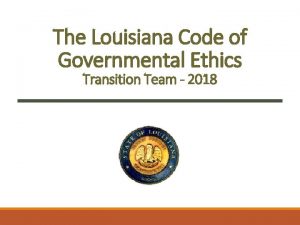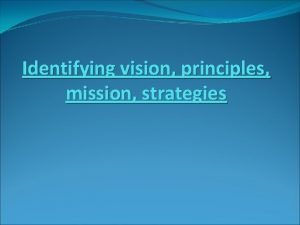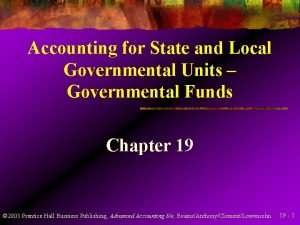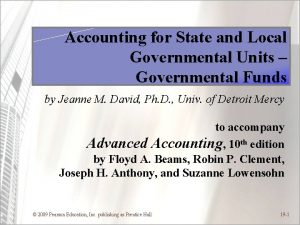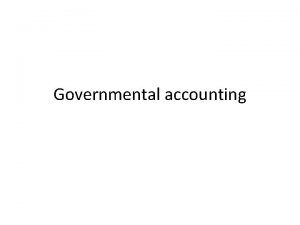Aid International aid Official governmental aid Multilateral aid






- Slides: 6

Aid International aid Official governmental aid Multilateral aid Given by many countries and paid out by an international organisation e. g. UN. Voluntary aid Bilateral aid Given from one country to another. The good…. . o Aid which is long term can help development. o Overtime the country can become less reliant on foreign aid. o Aid can help combat poverty. o It can be used to help a boost a countries economy. For example money can be used to set up new industry. Long-term Short-term Given for constant improvement. To help development. Given to cope with immediate problems caused by disasters. The bad…. . o The recipient can become dependent on the aid. o Some aid may not reach the people who need it. o Some aid only lasts a short timewill not help development. o Some aid can be tied. o The benefits of aid can take a long time.

Employment structures and development NIC LEDC MEDC As a country develops they loose their primary industry and begin to industrialise as the country becomes further developed and the land too expensive the secondary industry is moved. Any secondary industry that is left if carried out by machines. Tertiary industry then has enough money to fully develop.

Water. Aid is an international NGO (non-governmental organisation /charity) that focuses on the provision of safe domestic water, sanitation and hygiene education to the world's poorest people. . Water. Aid's vision is of a world where everyone has access to safe domestic water and effective sanitation. Women spend much of their time searching for water. Children also spend precious school hours looking for water at the expense of their education Mali’s environment is harsh and deteriorating. Rainfall levels are already low and falling further. Poor sanitation means bad health. Bacteria, viruses and parasites found in human waste are responsible for the transmission of cholera, typhoid and other infectious diseases that kill millions of people each year. The problem is huge in both urban and rural areas In Mali, the water industry is privatised but often fails to the provide water to rural and urban aeas. Wateraid is first targeting Slums in Mali’s capital, it wants to show the government that projects in slums are easy to set up and sustainable. In Mali, current national figures indicate that only 50% of the people have access to clean drinking water and only 4% of the population have access to adequate sanitation facilities (toilets). Wateraid employs local people, who they are training up to maintain the system and raise money to keep it running. Then invest in the community – THIS IS SUSTAINABLE Health has now improved include reducing the deaths from diarrhoea – 65% improvement Education is now improving, money is being invested into the infrastructure

South East Brazil is the economic CORE region of Brazil, it has primary, secondary, tertiary and quaternary industries. The quality of life and wages are higher than anywhere else in Brazil Secondary Industries It is the centre foreign and national investment in manufacturing. Investment was concentrated her in the 1950 s/60 s by the Government. Excellent road and rail links here, as well as the most ports and airports. Solid pipeline for oil and gas. The periphery is just outside the economic core, where most people live and some industries are located Primary Industries What influence the primary industries here? -Warm temperature -Average rainfall -Rich soils GREAT FOR FARMING Coffee, beef, rice, cacao, sugar cane and fruit are grown here MINING -Large deposits of gold, iron ore, manganese and bauxite make mining very viable here -ENERGY -Oil, gas offshore and hydroelectric power from the large river ensure energy is produced -FOREST/LOGGING -Warm temperatures create the forest -FISHING -Off the coast many are employed in fishing and supplies food for the locals Tertiary Sao Paulo is the largest financial centre in south America. Most headquarters for Brazil’s banks. Rio de Janerio, Santos, Sao Paulo major cities Quaternary Centre of research and development in public & private sectors. San Jose Dos Campos is the key area. The Aerospace Technical Centre is where space & aviation is developed & tested Car industry is the major activity – Ford, GM, VW, Fiat and Toyota manufacture here. Other production includes clothing, food , printing and furniture. (Yet decreasing due to competition in AISA) Map showing Brazil’s regional Human Development Index

Primary Lots in the west. They produce coffee, tea, tobacco and fruits. The area has good soil and rainfall. Tertiary Strong in the rift valley as there is lots of National Parks and lakes. Primary Lots in the north east. They rear livestock such as cattle. The area is too hot and dry to grow crops but suitable for grazing. Tertiary Strong on the coast because of the beaches. Secondary Lots of manufacturers in Nairobi. They produce clothes, food and drink. The area has good transport links and a good labour supply. Secondary There are cement works in the coast. They use the limestone from nearby deposits as a raw material and can then ship it easily.

Employment structures Secondary industry Primary industry Economic o Cheap land as farming uses large areas of land. o Good transport routes to export. Tertiary industry Economic o A suitable local market. o Good transport routes. o Skilled and educated workers. Environment al o Lots of raw materials. o A suitable climate. o Good soil. o o Environment al o Close to raw materials. o Plenty of flat land o A local water supply. Economic Suitable local market. Government grants given to encourage set up. Lots of workers. Good transport routes. Quaternary industry Services Environmental o Green open spaces for a pleasant environment. Social o Enough local people to support the service. Economic o Near similar businesses so that information can be shared. o Skilled and educated workers. Research and development. Environmental o Green open spaces for a pleasant environment. Social o Nice quality housing nearby to encourage workers to move.
